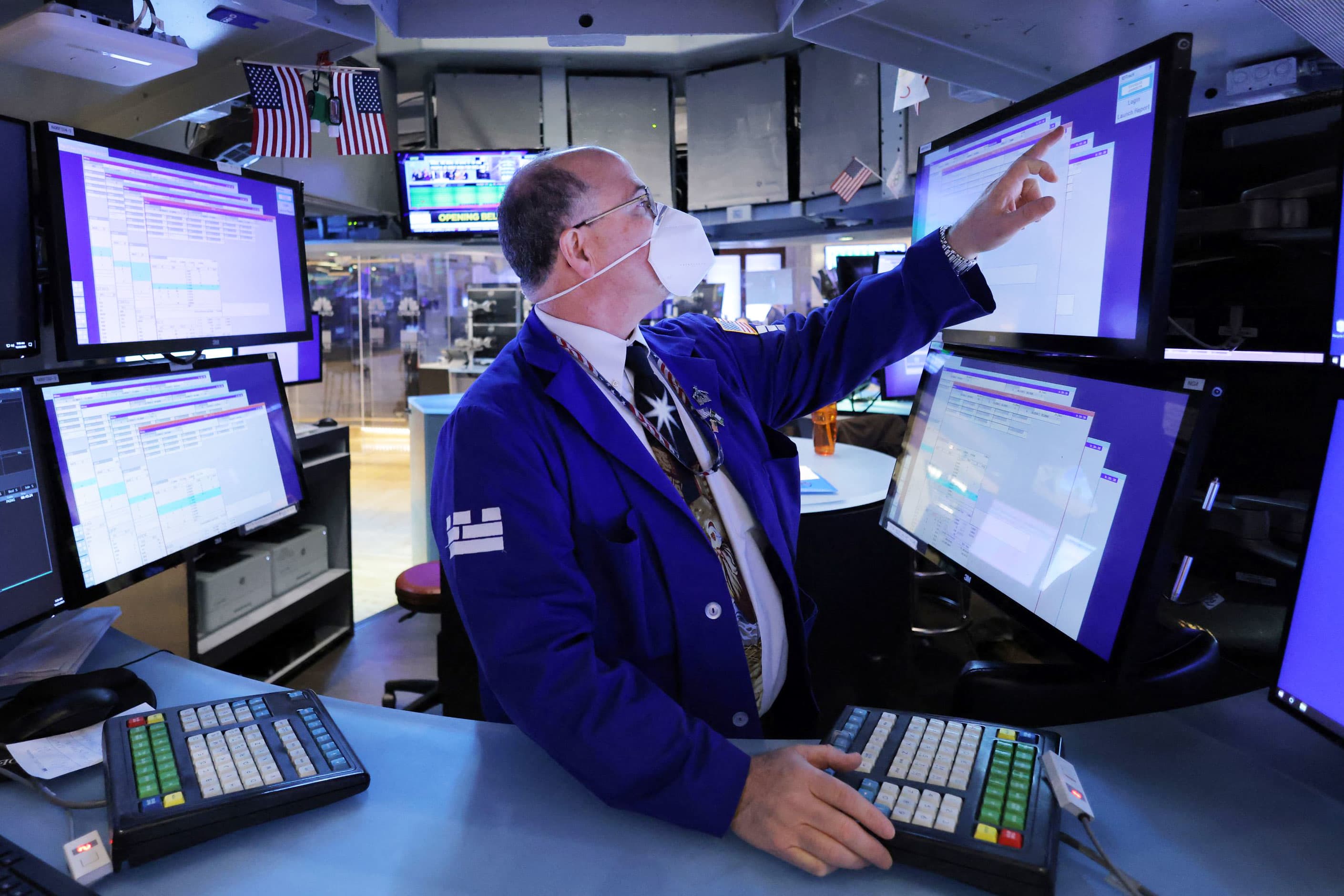Dow rises for a sixth straight day, S&P 500 is mostly flat

U.S. stocks were mixed Wednesday with the Dow Jones Industrial Average rising for a sixth straight day as traders continued to assess the threat of the omicron Covid-19 variant.
The Dow added about 70 points, or 0.2%. The S&P 500 traded near the flatline. The tech-heavy Nasdaq Composite dipped 0.4%.
Nike led gainers on the Dow, rising 1.6%. IBM, Walgreens and Home Depot also rose in the blue-chip average.
On the downside, travel-related stocks struggled. American Airlines and Alaska Air each pulled back more than 1%. Carnival and Norwegian Cruise Line both fell roughly 1%. Boeing led decliners on the Dow with a 1.2% dip.
Higher-growth technology stocks dipped as the benchmark U.S. 10-year Treasury yield jumped above the 1.5% level. Rising rates discount the value of future earnings and therefore can hit growth stocks like technology names particularly hard. Nvidia and AMD lots 3% and 2.8%, respectively
Tesla shares fell 1.4% after financial filings published late Tuesday showed CEO Elon Musk sold another 934,090 shares, or about $1.02 billion worth of his holdings, in the electric car company.
Investors continue to monitor developments with the omicron Covid strain.
The U.S. has confirmed more than 4.1 million Covid cases this month, according to data from Johns Hopkins University. That’s well above November’s tally of 2.54 million. The country’s seven-day average of cases is also at 231,888 cases, more than triple the mean from Nov. 27.
However, the Centers for Disease Control and Prevention this week shortened its isolation recommendation for people who test positive from 10 days to five if they don’t have symptoms. Research from South Africa also suggests that omicron infections can boost immunity against the delta variant.
Investors are hoping to end the year on a high note with the S&P 500 returning more than 27% in 2021 and the Dow up more than 19%.
The “Santa Claus rally” period encompasses the last five trading days of December and the first two of January. This is a historically strong period for the market, with the S&P 500 averaging a return of 1.7% since 1928.
Stocks were under pressure in late November, when news of the omicron variant first broke. They have since rebounded, however, with the S&P 500 up 4.8% for December.
The market has shown resiliency in the past few weeks as traders weigh the omicron variant and potentially tighter monetary policy from the Federal Reserve next year, Virtus Investment Partners’ Joe Terranova told CNBC’s “Closing Bell” on Monday.
He noted, though, that the “risk profile of the market is clearly changing” due to the potential for higher volatility in the new year.
The market is “gravitating toward a more qualitative holding,” Terranova said. “I don’t think the market wants the speculative areas in which investors have been rewarded the last couple of years. That’s the hyper-growth stocks.”
Subscribe to CNBC PRO for exclusive insights and analysis, and live business day programming from around the world.




